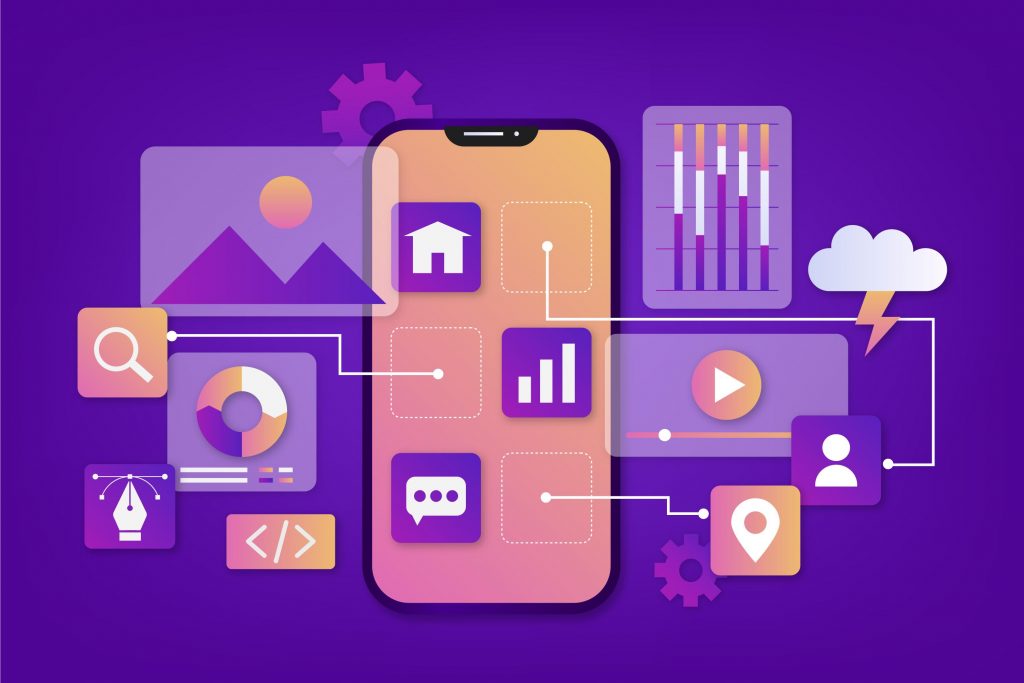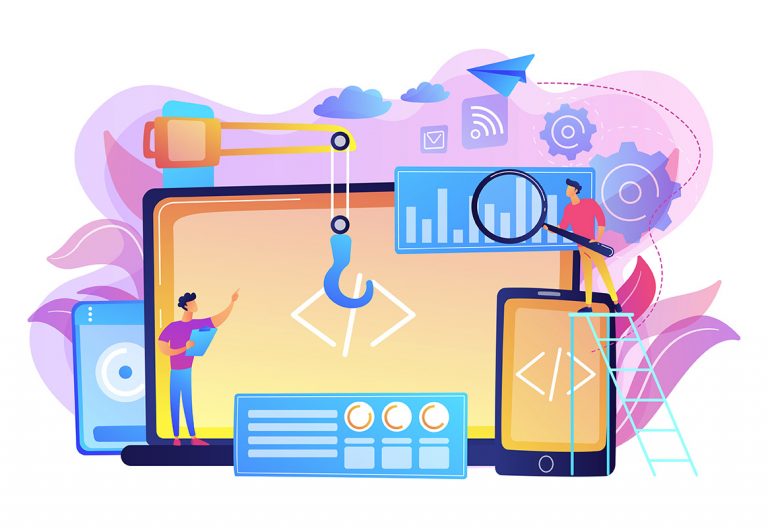Introduction
The year 2023 marks an era of immense transformation in the field of mobile development, brought about by a technology that has shown immense promise and usability – Flutter. As we continue to tread through a world that is rapidly embracing digitization, the manner in which mobile applications are developed and deployed plays a significant role in defining user experiences. In this landscape, Flutter has emerged as a beacon of efficiency, simplicity, and versatility, fundamentally redefining the way cross-platform mobile development is approached. This blog seeks to shed light on the revolution Flutter is stimulating in cross-platform mobile development in 2023, underlining its potential, its growth, and its impact. Join us as we delve into understanding Flutter’s journey and picturing its path ahead.
Flutter is an open-source user interface (UI) software development kit (SDK) created by Google. It was first released in May 2017, and it is used for developing cross-platform applications. This means you can use the same code base to create apps for Android, iOS, Windows, Mac, Linux, Google Fuchsia, and the web.

The Rising Star: Flutter’s Growing Popularity
Launched by Google in 2017, Flutter, in a short span of time, has managed to captivate developers worldwide with its unique blend of speed, uniformity, and simplicity. A holistic analysis of Flutter’s rise to fame reveals several key factors:
- Ease of Learning with Dart: Flutter utilizes the Dart programming language. Dart’s simplicity, familiar syntax, and versatility make the learning curve for Flutter considerably easier for developers, especially those already acquainted with languages like JavaScript and Java.
- A Wealth of Features: Its package includes an array of built-in widgets and tools. This makes Flutter an incredibly versatile and powerful framework capable of handling complex development requirements with ease.
- User Interface (UI) Centric Approach: Flutter’s unique selling point lies in its focus on creating visually appealing and user-centric interfaces. This emphasis on immersive UI makes Flutter a preferred choice for businesses and developers aiming to provide users with engaging experiences.
- Growing and Vibrant Community: An active and ever-growing community of Flutter enthusiasts contribute to its popularity. This community plays a crucial role in knowledge exchange, providing resources and constant enhancements to the framework.
- Adoption by Major Players: It has caught the attention of industry giants, and many, including BMW, Alibaba, and eBay, have adopted it for their mobile applications. This widespread adoption by big brands further underlines its potential in crafting robust, scalable applications.
Single Codebase, Multiple Platforms
One of the cornerstones of Flutter’s success is its ability to support multiple platforms with a single codebase. This unique characteristic provides several benefits:
- Boosted Development Efficiency: Flutter cuts down the need for separate development teams for each platform, thereby speeding up the development process and ensuring more efficient use of resources.
- Consistent Performance Across Platforms: A single codebase means that Flutter applications can provide a uniform performance and user experience on different platforms, making it a preferred choice for cross-platform development.
- Cost-effectiveness: With a streamlined development process that negates the need for separate iOS and Android teams, Flutter brings down the overall cost of mobile application development.
- Faster Time-to-Market: Flutter’s single codebase approach significantly cuts down the development cycle, enabling faster product launches. This aspect gives businesses a competitive advantage in the fast-paced digital marketplace.
Understanding Flutter’s Key Features
Flutter’s framework is enriched with multiple advantages that propel its stature in cross-platform mobile development. Its ‘Hot Reload’ functionality, native-like performance, customizable user interfaces, and thriving community all come together to offer an unparalleled development experience.
- Fast Development with Hot Reload: A key feature that sets Flutter apart is ‘Hot Reload‘, enabling developers to instantly see the effects of their changes in the code on emulators, simulators, and hardware. This results in a faster development cycle, quick bug fixes, and rapid iterations, all leading to an accelerated time-to-market.
- Native-Like Performance: With an architecture designed to compile Dart code into native machine code, Flutter provides a performance that competes with native apps. This direct compilation ensures smooth, lag-free applications that provide superior user experiences, akin to native apps.
- Beautiful and Customizable User Interfaces: Flutter’s treasure chest of widgets that adhere to specific design languages like Material Design (Google) and Cupertino (Apple), allow developers to craft visually stunning and customizable UIs. This, in turn, enables the transformation of innovative UI concepts into reality, enhancing user engagement and satisfaction.
- Thriving Community and Ecosystem: The role of the vibrant and ever-growing Flutter community cannot be overstated. This community facilitates continuous knowledge exchanges, develops robust third-party packages, and contributes to ongoing ecosystem enhancements. Community support is a significant driver behind Flutter’s continuous evolution and success.
Why Flutter is the Future of Mobile Development
Several factors underline Flutter’s position as the future of mobile development:
- Seamless Integration with Emerging Technologies: Flutter’s capacity to integrate seamlessly with cutting-edge technologies like Firebase and GraphQL allows developers to build feature-rich and complex applications that meet modern-day business needs.
- Fuchsia OS Support: Flutter’s compatibility with Google’s experimental Fuchsia OS, which runs Flutter apps natively, suggests an exciting growth path for Flutter, particularly if Fuchsia gains more popularity.
- Continued Growth and Development: Flutter’s future looks promising, thanks to the active support from Google and the enthusiasm of its vibrant community. Regular enhancements and a commitment to solving developers’ problems ensure that Flutter remains at the forefront of mobile app development.
The Impact of Flutter on the Mobile App Development Industry
Flutter has carved out a significant niche for itself in the mobile app development industry. By providing a cost-efficient, streamlined, and unified solution, Flutter has substantially impacted how businesses approach mobile app development. It is inspiring an industry shift towards cross-platform technologies, encouraging the creation of beautiful, high-performing applications with reduced effort and time.
Best Practices for Using Flutter in 2023
Leveraging Flutter’s full potential calls for adherence to certain best practices:
- Following the DRY Principle: ‘Don’t Repeat Yourself’. This principle can be achieved by creating reusable widgets and methods. This leads to cleaner code that’s easier to manage and maintain.
- Effective State Management: Depending on the complexity of the app, choosing an appropriate state management solution can significantly improve app performance and make the codebase easier to maintain.
- Null Safety: With Dart 2.12 introducing null safety, using it prevents null reference exceptions, contributing to the robustness and stability of Flutter applications.
- Frequent Testing: Regularly conducting unit tests, widget tests, and integration tests will help ensure the functionality of the application and keep it bug-free. Flutter provides a rich set of testing features to check your app at the unit, widget, and integration level.
- Applying Design Patterns: Utilizing design patterns, like Bloc, Provider, or MVVM, provides a systematic way to build Flutter apps, helping to organize the codebase effectively and making it easier to manage and scale.
Conclusion
As we move deeper into 2023, Flutter continues to redefine the landscape of cross-platform mobile development. From its single codebase advantage, its focus on beautiful user interfaces, to its seamless integration with emerging technologies, Flutter is undoubtedly shaping how mobile apps are developed and deployed. Its potential is immense, its impact profound, and its future promising. As businesses and developers worldwide continue to embrace Flutter, it stands to reason that this Google-powered SDK is not merely a passing trend but a revolution in the realm of mobile development.
In essence, as the world continues to become increasingly mobile, technologies like Flutter will play a critical role in defining how businesses reach out to their audiences. As such, understanding Flutter and its potential is crucial for anyone involved in the mobile app development industry. The Flutter wave is here, and it’s rewriting the rules of the game.




Leave a Reply